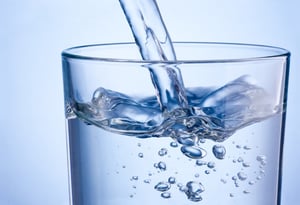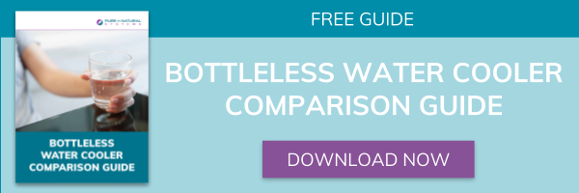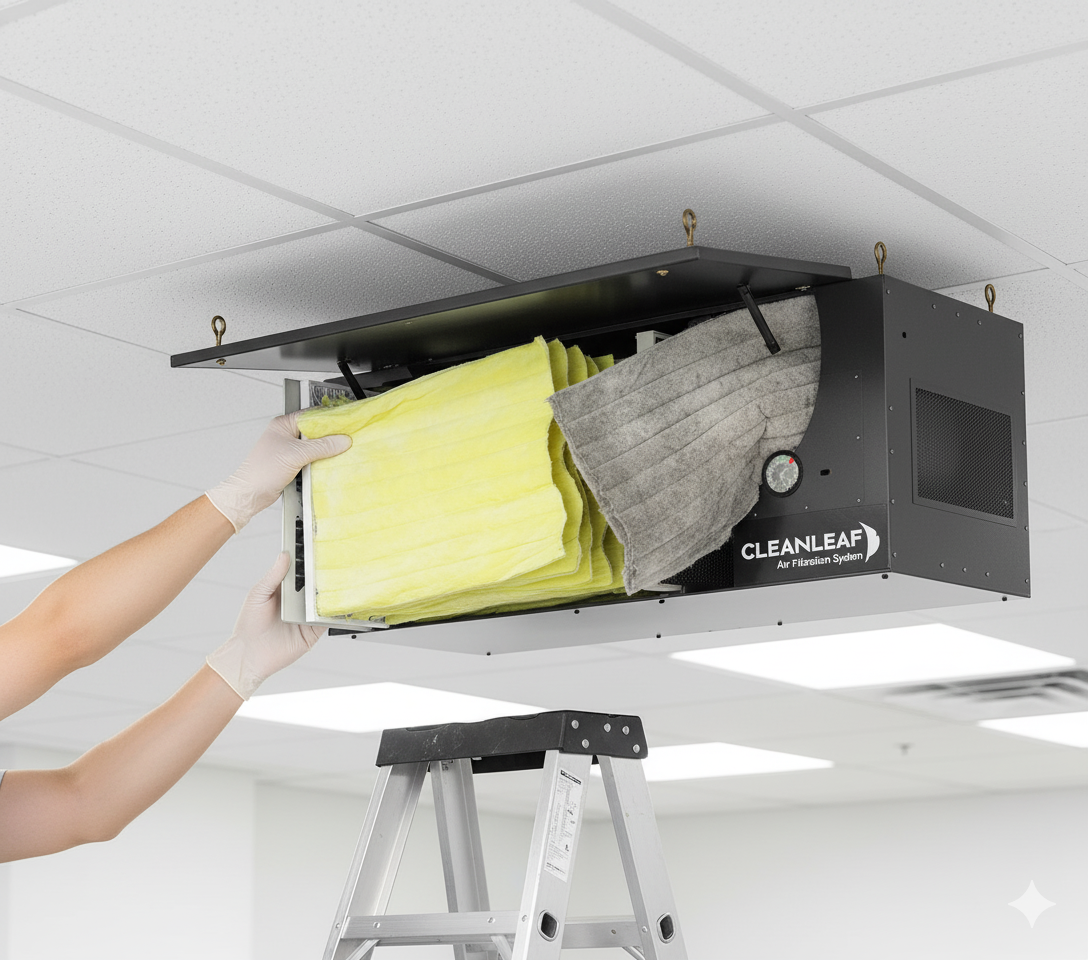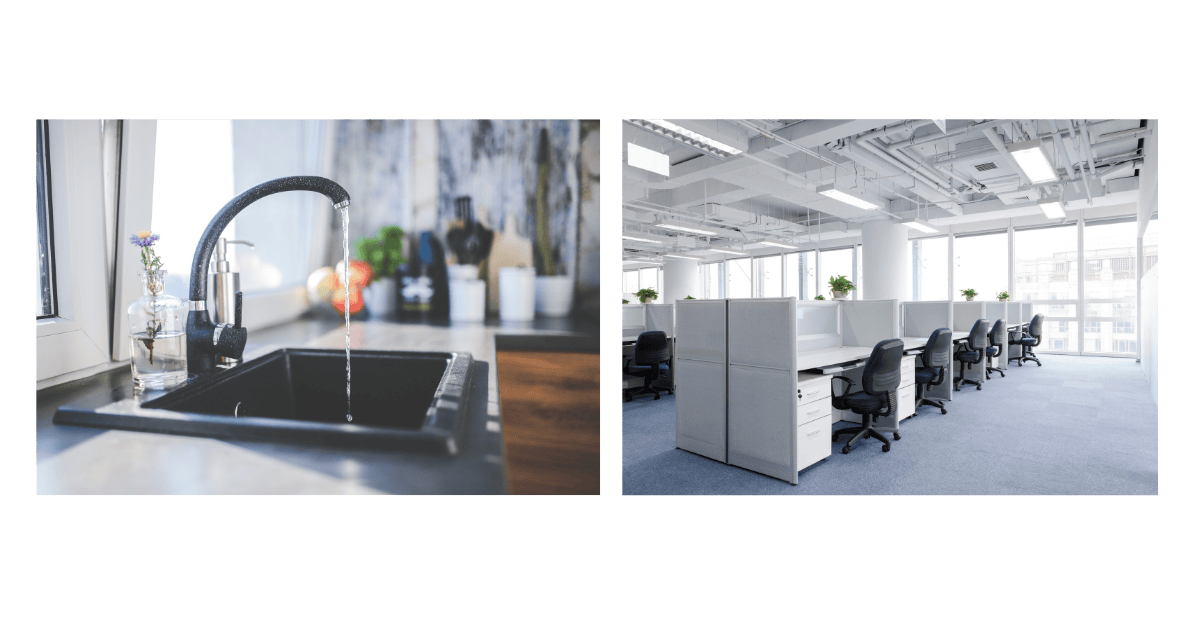 If you're in the market for a water cooler or water filtration system, you might be wondering what kind of filtration you need. One of the types of filtration methods you have probably heard of is reverse osmosis, but what exactly does that mean and how does it work? Does your business or home need it?
If you're in the market for a water cooler or water filtration system, you might be wondering what kind of filtration you need. One of the types of filtration methods you have probably heard of is reverse osmosis, but what exactly does that mean and how does it work? Does your business or home need it?
Learn more about reverse osmosis filtration before you purchase a bottleless water cooler or water filter system for your business or home.
How does reverse osmosis filtration work?
Reverse osmosis filtration cleans water by taking out the totally dissolved solids (TDS) that contaminate drinking water. Although city water treatment removes the dirt and debris and adds chlorine to prevent the spread of diseases, it does not remove TSDs. The increasing pollution of our surface and ground water with contaminants such as lead, mercury, and chromium-6 — as well as the naturally occurring harmful contaminants such as arsenic, fluorides and sulfides found in some areas of the country — makes it more important than ever to have a way to remove contaminants at the point of use.
Reverse osmosis membranes used in water filtration systems can remove an average of 95 percent of dissolved contaminants from water. (See the table below.) Only 1 percent of city water entering the home is used for drinking and cooking — about two to three gallons per day — where the average home uses 300 gallons per day or more. So it makes sense to clean just the water needed for drinking and cooking at home. City water is available at the home from already-installed water mains and has the required pressure of 60 to 75 psi to make the reverse osmosis system work.
What is osmosis?
Osmosis is a naturally occurring process in human and animal membranes. It works by using high pressure to push water through a semi-permeable membrane. The process helps to remove impurities often found in municipal water, such as bacteria, fluoride, salt, iron, lead and even pharmaceuticals.
Salts in the body fluids build up osmotic pressure, forcing water molecules through the living membranes in our bodies. In under-counter filtration systems using reverse osmosis, pressure from the city water overcomes the "salt" pressure of the dissolved materials and forces the water molecules through a synthetic thin film membrane, leaving the dissolved salts behind. The city water enters the membrane filter element, and two streams leave: 1) the clean water and 2) the water containing the dissolved solid residue, called brine, which is discarded to the drain.
On the comparative chart below, reverse osmosis removes the smallest of materials, from 1 micron down to 1 Angstrom. For materials larger than 1 micron, particle filters are used ahead of the reverse osmosis membrane to prevent plugging of the tiny membrane pores.
Other types of water filtration
If you are looking to buy a bottleless water cooler you may have noticed other types of filtration methods available. Some common ones besides revers osmosis include:
Sediment and carbon
A two-stage filtration method that removes particles, rust and pipe scale using a sediment filter and then removes chlorine, as well as other unpleasant tastes and odors with a carbon filter.
Ultraviolet (UV) light
In this filtration method, water flows around a UV lamp that irradiates impurities. Those who rely on well water or are concerned about chlorination levels may be interested in this type of water filtration.
Ultra-Filtration
Similar to reverse osmosis, the an ultra-filtration membrane removes bacteria and viruses, heavy metals and other particles. Benign minerals such as salt, calcium and magnesium will be unaffected.
No filtration
If you have a great water source in your community, filtration may not be needed.
Often a bottleless water cooler will come with several water filtration methods, and you may be considering multiple water filtration for your home. The taste and composition of water in your area should help determine what filtration methods will work best for you. Talk to an indoor environmental solutions specialist about your specific needs.
Typical Reverse Osmosis Contaminant Removal Rates
| Aluminum 86% Arsenic 94% Barium 96% Bicarbonate 90% Borate 30% Bromide 87% Cadmium 96% Calcium 94% Chloride 87% Chromate 86% Chromium 96% Copper 98% Cyanide 86% Detergent 97% Ferrocyanide 98% Flouride 87% Herbicides 97% Insectecides 97% Lead 97% Magnesium 96% |
Manganese 95% Mercury 96% Nickel 98% Nitrate 80% PCBs 97% Perchlorate 96% Phosphate 96% Potassium 87% Radium 80% Selenium 94% Silicate 85% Silver 93% Sodium 87% Spores 99.9% Strontium 96% Sulfate 97% Thiosulfate 96% Zinc 98% Factory Tests at 65psi and 77F. Actual rates may vary. |
Editor's Note: This blog was originally published on July 21, 2017 and has been updated for accuracy and comprehensiveness.





